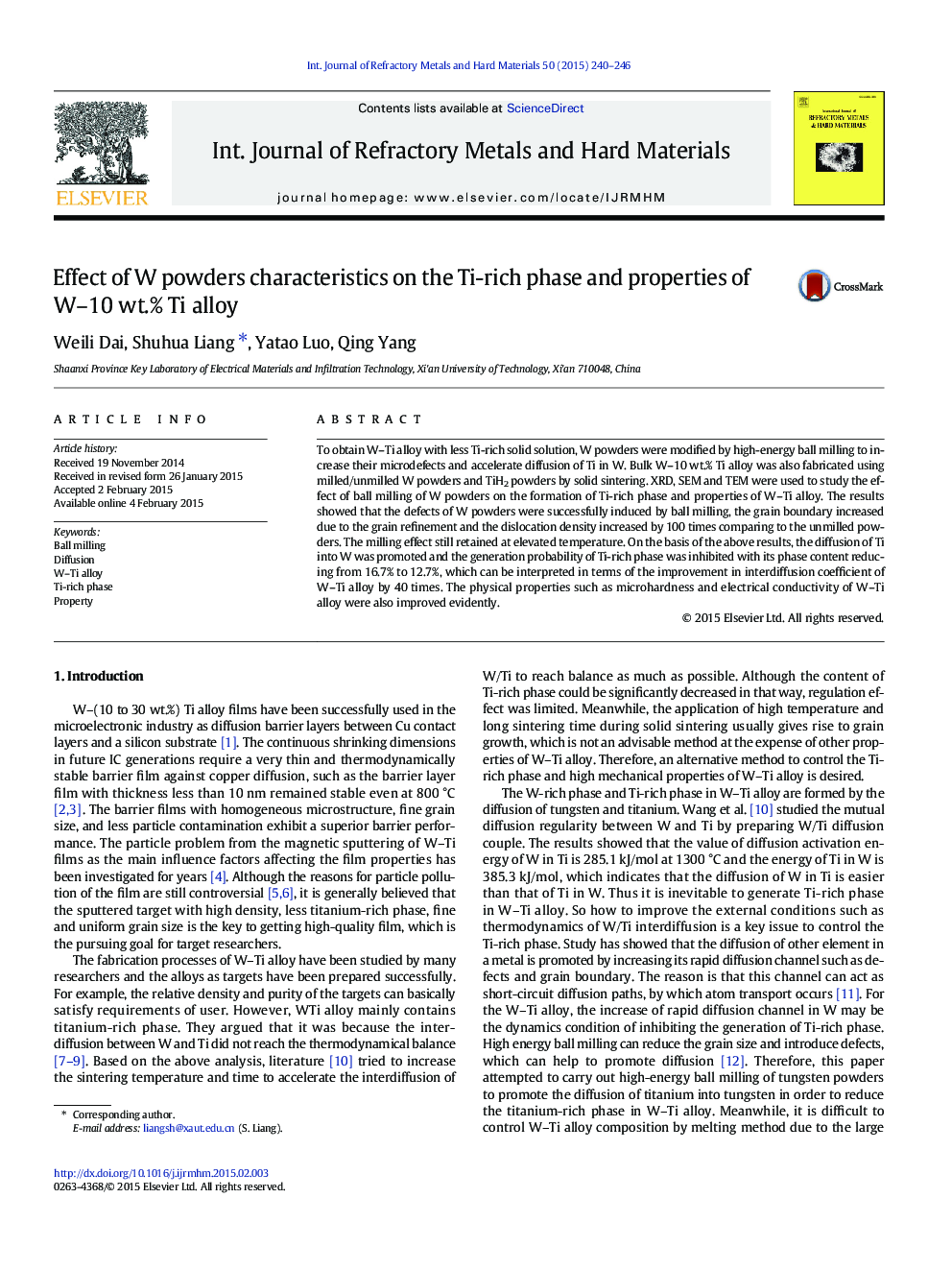| Article ID | Journal | Published Year | Pages | File Type |
|---|---|---|---|---|
| 1602788 | International Journal of Refractory Metals and Hard Materials | 2015 | 7 Pages |
•Defects of W powders are induced by ball milling to inhibit Ti-rich phase.•The area ratio of Ti-rich phase is reduced from 16.7% to 12.7%.•The diffusion coefficient of WTi alloy is improved by 40 times.•The milling effect is still retained at elevated temperature.
To obtain W–Ti alloy with less Ti-rich solid solution, W powders were modified by high-energy ball milling to increase their microdefects and accelerate diffusion of Ti in W. Bulk W–10 wt.% Ti alloy was also fabricated using milled/unmilled W powders and TiH2 powders by solid sintering. XRD, SEM and TEM were used to study the effect of ball milling of W powders on the formation of Ti-rich phase and properties of W–Ti alloy. The results showed that the defects of W powders were successfully induced by ball milling, the grain boundary increased due to the grain refinement and the dislocation density increased by 100 times comparing to the unmilled powders. The milling effect still retained at elevated temperature. On the basis of the above results, the diffusion of Ti into W was promoted and the generation probability of Ti-rich phase was inhibited with its phase content reducing from 16.7% to 12.7%, which can be interpreted in terms of the improvement in interdiffusion coefficient of W–Ti alloy by 40 times. The physical properties such as microhardness and electrical conductivity of W–Ti alloy were also improved evidently.
